We should celebrate walking in Britain now more than ever
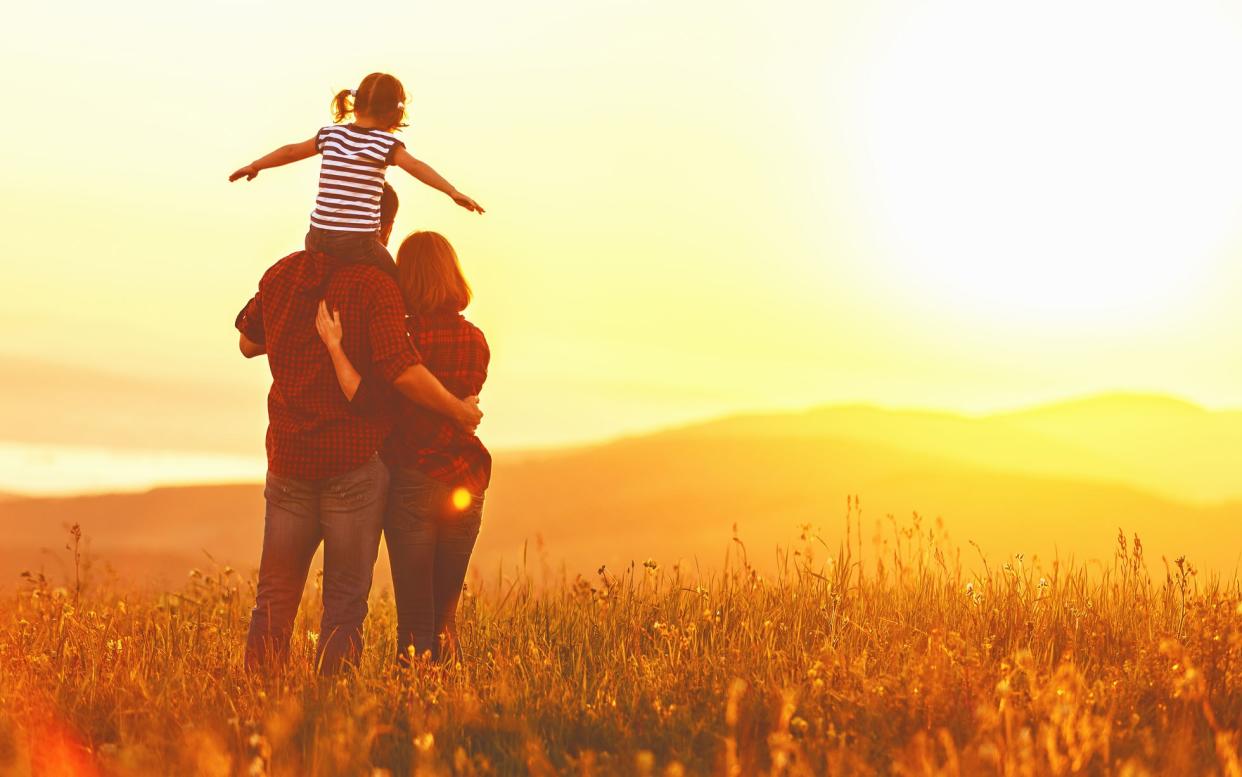
At 9pm, with only the faintest glow left in the west, the birds stopped singing. Venus blazed and, as darkness deepened, others joined: Arcturus, Procyon, the Plough. A breeze riffled ink-black trees. Bats swooped. Something scuttered in the hedge. I knew exactly where I was; I’d walked this circuit of country lanes many times, and since lockdown almost daily. But I’d never done it at night. This time I wasn’t just walking with my legs; I was walking with every pore, every nerve.
May is National Walking Month, a time to recognise the benefits of getting out on foot. This year, the Living Streets charity (livingstreets.org.uk) is running the #Try20 campaign, encouraging people to walk for 20 minutes every day throughout May to maintain physical and mental health during lockdown. It highlights the fact that we should celebrate walking now more than ever – and it doesn’t matter if you can’t go far.
Travel teaches us to look at the world differently, and the same can be applied to our new, smaller spheres. Even if your routes are limited, approaching your allowance of daily exercise with a different focus – such as walking after dark – can bring huge variety and rewards.
I’m lucky. I live on the edge of Bath, where honey-stone gloriousness melts into rolling Cotswolds. From home I can walk through empty Georgian streets, woods flush with bluebells, and Civil War battlefields; I have a lovely local hill that provides soul-stirring views. But it doesn’t really matter where you are if you have a traveller’s curiosity. Think about what you love to do when you’re away – waking at sunrise, watching wildlife, taking photos, learning something new – and seek the same sensations from your own doorstep.
For instance, I think history enhances everything, so I was delighted when I found that Woolley, passed regularly on my daily walk, is a “doubly thankful village” – one of only 13 in Britain to have seen every man who went to fight return from both world wars. Who knows what you might find with a little research? The luminaries in the cemeteries, the ghosts haunting the gables or the revelations hidden in place names to which you don’t usually give a second thought (look up the meanings – visit kepn.nottingham.ac.uk).
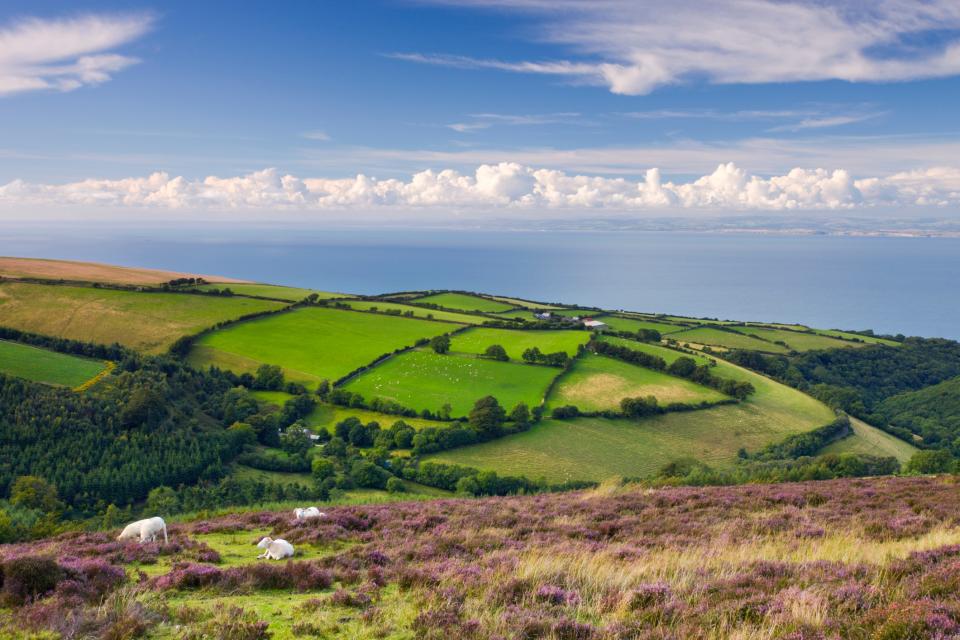
Sometimes my walks have a hint of safari: sheep migrating across Somerset savannah, deer emerging at dusk, small birds flashing between verges, a lone llama, quite out of place. My translation app has been replaced with Bird Song ID; I’ve even started an album of poo pictures I try to identify when I get home.
Then at times I get creative. I’ve started attempting flash fiction (stories under 1,000 words), which encourages you not to get hung up on producing “The Next Great Novel” but simply to enjoy the writing itself. So I use prompts from my walks – house names, bench dedications – and let my imagination roam wherever it wants, even if I can’t physically follow.
Yes, we are grounded. But that doesn’t mean we can’t explore. Embrace National Walking Month, even if that means 31 days of covering the same route – with the right outlook, it won’t be the same walk twice.
Explore with kids
So how do you make a humble walk the pastime of choice for children? “First, I don’t say ‘We’re going for a walk’ – I pitch it as an adventure,” says family blogger Helen Terry (routesforlittleboots.wordpress.com). “Let the kids set the pace, too – you’re not on a mission, the objective is to be outdoors and enjoying it. If there’s any time limit, don’t go far.”
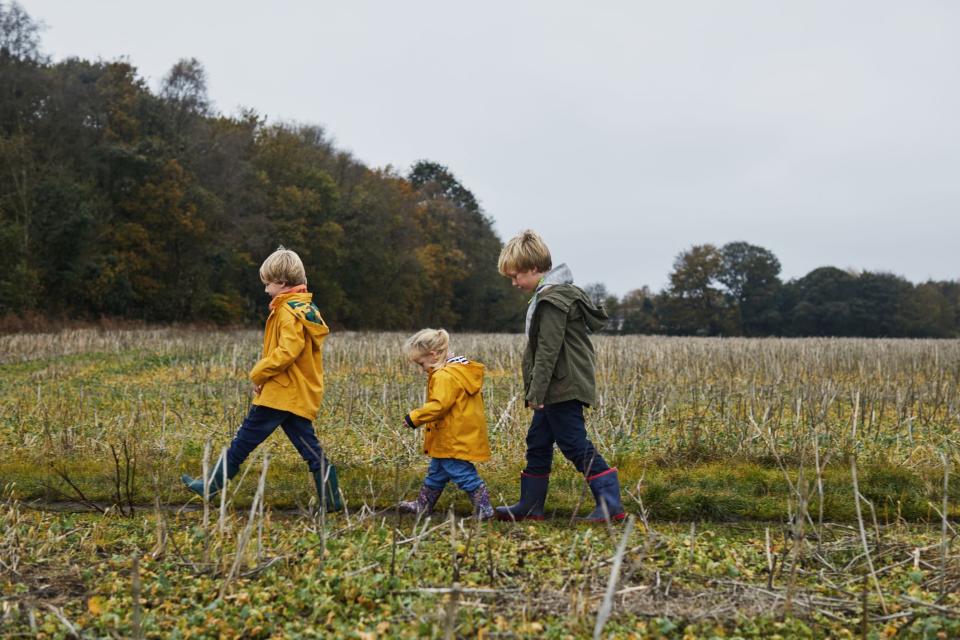
But you can create plenty of fun on the doorstep. “Try devising a quiz, which can be done anywhere and adapted for any age,” says Terry. “For example, how many benches are in the park? What colour is the butcher’s door? How many rainbows are in the windows?” While touching railings and swings isn’t ideal, get hands-on in other ways. “Create journey sticks,” advises Terry. “Collect feathers, leaves, etc, and tie them to a long stick with bright wool as you walk. Then use the stick to tell a story about the outing to someone else when you arrive home.”
If you’re trying to coax out older children, make them feel more empowered by letting them choose the route or even dictate what the adults must wear (tuxedos and leotards, perhaps?). Or consider a virtual walk – computer game Walden (waldengame.com) leads players into the life of Henry David Thoreau.

Up the challenge
You might have had to cancel your Himalayan trek, but you can still test your fitness on your government-sanctioned exercise. Damian Hall, record-holding ultra-runner, author and coach (damianhall.info), is maintaining his training on his local hill. “When hills are involved in a hike, you’re not only working on your cardiovascular fitness but also leg and core strength,” says Hall. “To turn your hike into a workout, go up your longest or steepest hill several times, carry a little unnecessary weight to work your muscles more, or time yourself and try to beat that next time.”
It’s not all about gradient. “Agility, foot dexterity and proprioception [awareness of the position and movement of the body] are underrated skills,” adds Hall. “Whenever there’s uneven ground, go up and down it. Look for the rootiest, rockiest paths and have fun dancing along, dodging obstacles. This will improve ankle strength and mobility.”
Apps can help you track your steps. For instance, MapMyWalk logs your distance, pace, speed, elevation and calories burned. Strava can be used to track and log various activities; its heatmaps indicate popular routes (perhaps worth avoiding, for social distancing). You don’t need to own a Fitbit to use the Fitbit app, which can track your walks via GPS and your phone’s motion sensor.

Master maps
Poring over a good map can help expand even our now-limited horizons. Physical Ordnance Survey maps can be ordered online (ordnancesurvey.co.uk/shop) or viewed for free at bing.com/maps – just change the map type from “Roads” to “Ordnance Survey” using the drop down menu in the top-right corner.
“Keep zooming in to show more detail, including footpaths [green lines],” says Rich Gentry, instructor at the Plas y Brenin National Outdoor Centre (pyb.co.uk). “Look at your local area – maybe you’ll find footpaths you never knew existed. Use them to access green spaces or link roads, so you’re not always on concrete.”
Ordnance Survey maps are packed with information, from contour lines to historical sites: there could be burial mounds or stone circles on your doorstep; annotations in gothic font are a giveaway. “Go to the OS Map Zone [ordnancesurvey.co.uk/mapzone] for help with map reading,” says Gentry. “It covers topics such as distance and the meanings of symbols – useful skills to learn to help plan new routes.”
For navigation on the move, download a mapping app to your phone – the most popular are ViewRanger and OS Maps, which have free versions as well as paid-for options that give greater detail.
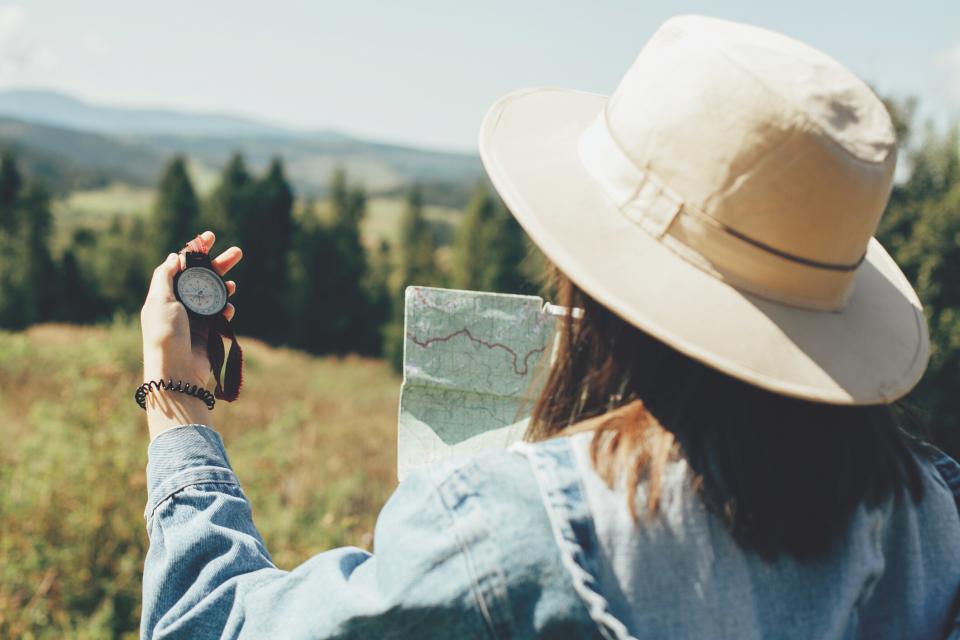
Get creative
Turn your physical activity into a creative exercise by making a visual diary of your walk. “It’s a way to waken the senses and feel part of a complete environment,” says Mary-Anne Bartlett, founder of Art Safari (artsafari.co.uk). “Everyone can be an artist – the key is not to take it too seriously, and enjoy the process of looking.” Take a pencil and paper (clipped to a piece of cardboard), date each page and pause briefly a few times on your walk to scribble notes and make quick sketches. “You can collect enough in a few lines; the urgency of a fast drawing can give the best results,” adds Bartlett. In a time of anxiety and uncertainty, it can be hugely therapeutic. “The page is your space to draw, observe, play – you have control,” she says.
Photographers should use their smartphone’s exposure compensation feature to adjust light levels (you might not be able to walk in the best light). Don’t loiter but shoot instinctively, using basic settings, and make tweaks later. The free Adobe Lightroom app offers advanced editing tools; it even allows you to shoot Raw files, which contain more data so you can make more extreme edits without losing quality.

Seek stories
You travel to learn, and there’s no reason you can’t do that on your doorstep. Research the names in the churchyard, look up myths associated with your local lake, follow a blue plaque trail. You could even turn your walk into time travelling. “Get an old map and see what you can spot that’s different now,” suggests David Musgrove, content director of BBC History Magazine and historyextra.com. “Check out the free digitised maps at british-history.ac.uk/catalogue/maps. There are loads of first edition OS maps from the late 19th century. Another great site is visionofbritain.org.uk, which holds loads of easily searchable old maps and other information like census data.”
Also, read the countryside as you walk. For instance, lines of parallel furrows in a field are often a sign of medieval farming practices, while ridges are the places to look for prehistoric barrows (burial mounds), which were erected in high places where everybody could see them.
“Look out in particular for clumps of nettles,” advises Musgrove. “They tend to grow on disturbed ground where something happened. Think about what might have occurred there: is it the ruins of a house, the spot where someone once buried some coins – or is someone’s skeleton lying underneath?”
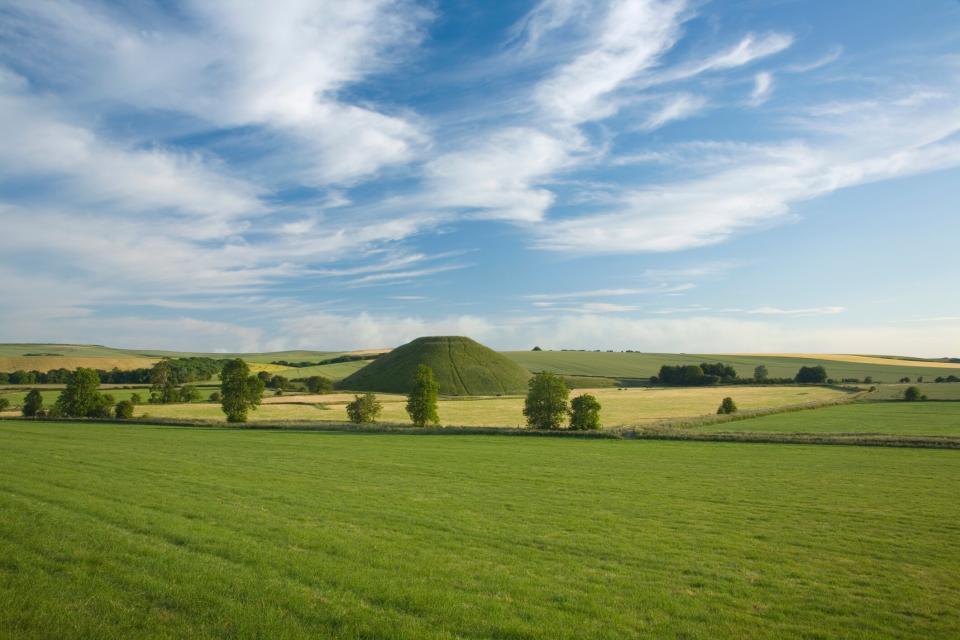
Shift your perspective
The most familiar walk can be rendered foreign if you do it at a different time of day. Most thrilling of all is to walk after dark.
“There has never been a safer time to be out at night – hardly any people, hardly any cars,” says adventurer Alastair Humphreys (alastairhumphreys.com), who is currently attempting to run every street in his city. “As well as realising there are places within a mile of my house I’ve never seen before, I’m doing it at night, which gives a new perspective – the smell of hawthorn on dark lanes, foxes in the housing estates, late night TV glows.” Dusk or dawn walks give a higher chance of spotting rabbits, deer and badgers, too.
Check the astronomical situation: for more light, head out under a full moon (the next is on May 7); for better stargazing, choose the dark nights around the new moon (May 22) and download an app such as SkyView Lite (free), which pinpoints constellations. The Eta Aquariid meteor shower is usually visible from late April to May 20 (peaking on May 5). A good head torch will stop you coming a cropper on night walks.
Alternatively, get up early for the dawn chorus (which peaks from 30 minutes before to 30 minutes after sunrise), magical light, different smells and fewer people.

